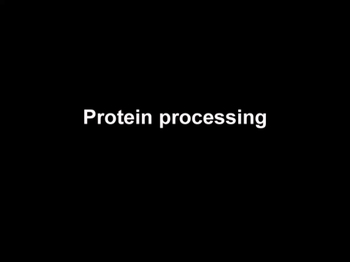Table of contents
- 1. Introduction to Biology2h 42m
- 2. Chemistry3h 40m
- 3. Water1h 26m
- 4. Biomolecules2h 23m
- 5. Cell Components2h 26m
- 6. The Membrane2h 31m
- 7. Energy and Metabolism2h 0m
- 8. Respiration2h 40m
- 9. Photosynthesis2h 49m
- 10. Cell Signaling59m
- 11. Cell Division2h 47m
- 12. Meiosis2h 0m
- 13. Mendelian Genetics4h 44m
- Introduction to Mendel's Experiments7m
- Genotype vs. Phenotype17m
- Punnett Squares13m
- Mendel's Experiments26m
- Mendel's Laws18m
- Monohybrid Crosses19m
- Test Crosses14m
- Dihybrid Crosses20m
- Punnett Square Probability26m
- Incomplete Dominance vs. Codominance20m
- Epistasis7m
- Non-Mendelian Genetics12m
- Pedigrees6m
- Autosomal Inheritance21m
- Sex-Linked Inheritance43m
- X-Inactivation9m
- 14. DNA Synthesis2h 27m
- 15. Gene Expression3h 20m
- 16. Regulation of Expression3h 31m
- Introduction to Regulation of Gene Expression13m
- Prokaryotic Gene Regulation via Operons27m
- The Lac Operon21m
- Glucose's Impact on Lac Operon25m
- The Trp Operon20m
- Review of the Lac Operon & Trp Operon11m
- Introduction to Eukaryotic Gene Regulation9m
- Eukaryotic Chromatin Modifications16m
- Eukaryotic Transcriptional Control22m
- Eukaryotic Post-Transcriptional Regulation28m
- Eukaryotic Post-Translational Regulation13m
- 17. Viruses37m
- 18. Biotechnology2h 58m
- 19. Genomics17m
- 20. Development1h 5m
- 21. Evolution3h 1m
- 22. Evolution of Populations3h 52m
- 23. Speciation1h 37m
- 24. History of Life on Earth2h 6m
- 25. Phylogeny2h 31m
- 26. Prokaryotes4h 59m
- 27. Protists1h 12m
- 28. Plants1h 22m
- 29. Fungi36m
- 30. Overview of Animals34m
- 31. Invertebrates1h 2m
- 32. Vertebrates50m
- 33. Plant Anatomy1h 3m
- 34. Vascular Plant Transport1h 2m
- 35. Soil37m
- 36. Plant Reproduction47m
- 37. Plant Sensation and Response1h 9m
- 38. Animal Form and Function1h 19m
- 39. Digestive System1h 10m
- 40. Circulatory System1h 57m
- 41. Immune System1h 12m
- 42. Osmoregulation and Excretion50m
- 43. Endocrine System1h 4m
- 44. Animal Reproduction1h 2m
- 45. Nervous System1h 55m
- 46. Sensory Systems46m
- 47. Muscle Systems23m
- 48. Ecology3h 11m
- Introduction to Ecology20m
- Biogeography14m
- Earth's Climate Patterns50m
- Introduction to Terrestrial Biomes10m
- Terrestrial Biomes: Near Equator13m
- Terrestrial Biomes: Temperate Regions10m
- Terrestrial Biomes: Northern Regions15m
- Introduction to Aquatic Biomes27m
- Freshwater Aquatic Biomes14m
- Marine Aquatic Biomes13m
- 49. Animal Behavior28m
- 50. Population Ecology3h 41m
- Introduction to Population Ecology28m
- Population Sampling Methods23m
- Life History12m
- Population Demography17m
- Factors Limiting Population Growth14m
- Introduction to Population Growth Models22m
- Linear Population Growth6m
- Exponential Population Growth29m
- Logistic Population Growth32m
- r/K Selection10m
- The Human Population22m
- 51. Community Ecology2h 46m
- Introduction to Community Ecology2m
- Introduction to Community Interactions9m
- Community Interactions: Competition (-/-)38m
- Community Interactions: Exploitation (+/-)23m
- Community Interactions: Mutualism (+/+) & Commensalism (+/0)9m
- Community Structure35m
- Community Dynamics26m
- Geographic Impact on Communities21m
- 52. Ecosystems2h 36m
- 53. Conservation Biology24m
4. Biomolecules
Proteins
Problem 7`
Textbook Question
Why are proteins not considered to be a good candidate for the first living molecule?
a. Their catalytic capability is not sufficient for most biological reactions.
b. Their amino acid monomers were not likely present in the prebiotic soup.
c. They cannot serve as a template for replication.
d. They could not have polymerized from amino acid monomers under early Earth conditions.
 Verified step by step guidance
Verified step by step guidance1
Understand the role of proteins in biological systems: Proteins are essential macromolecules that perform a wide range of functions, including catalysis of biochemical reactions, structural support, and transport of molecules.
Consider the requirements for the first living molecule: The first living molecule would need to have the ability to store information, replicate, and catalyze reactions.
Evaluate the ability of proteins to serve as a template for replication: Proteins are composed of amino acids linked by peptide bonds, but they do not have the ability to store genetic information or serve as a template for replication like nucleic acids (DNA or RNA) do.
Assess the presence of amino acids in the prebiotic environment: While amino acids are the building blocks of proteins, their availability and the conditions required for polymerization into proteins under prebiotic conditions are uncertain.
Analyze the catalytic capabilities of proteins: Although proteins can act as enzymes to catalyze reactions, the first living molecule would need to have a broader range of capabilities, including self-replication, which proteins alone cannot achieve.
 Verified video answer for a similar problem:
Verified video answer for a similar problem:This video solution was recommended by our tutors as helpful for the problem above
Video duration:
2mPlay a video:
Was this helpful?
Key Concepts
Here are the essential concepts you must grasp in order to answer the question correctly.
Catalytic Capability of Proteins
Proteins are known for their role as enzymes, catalyzing a wide range of biological reactions. However, the catalytic capability of proteins alone is not sufficient for the origin of life, as they require a pre-existing system to synthesize and fold them into functional structures. This limitation suggests that proteins may not have been the first self-replicating molecules necessary for life.
Recommended video:
Guided course

Proteins
Amino Acid Availability in Prebiotic Soup
The prebiotic soup theory posits that early Earth had a mixture of organic compounds from which life originated. However, the specific amino acids required to form proteins may not have been abundantly available or in the right conditions to spontaneously form complex proteins, making them unlikely candidates for the first living molecules.
Recommended video:
Guided course

Amino Acids
Template for Replication
For a molecule to be considered a candidate for the first living molecule, it must have the ability to replicate itself. Proteins lack the ability to serve as templates for replication, as they do not have a straightforward mechanism to encode and transfer genetic information, unlike nucleic acids such as RNA, which can both store information and catalyze reactions.
Recommended video:
Guided course

Introduction to DNA Replication
Related Videos
Related Practice






















